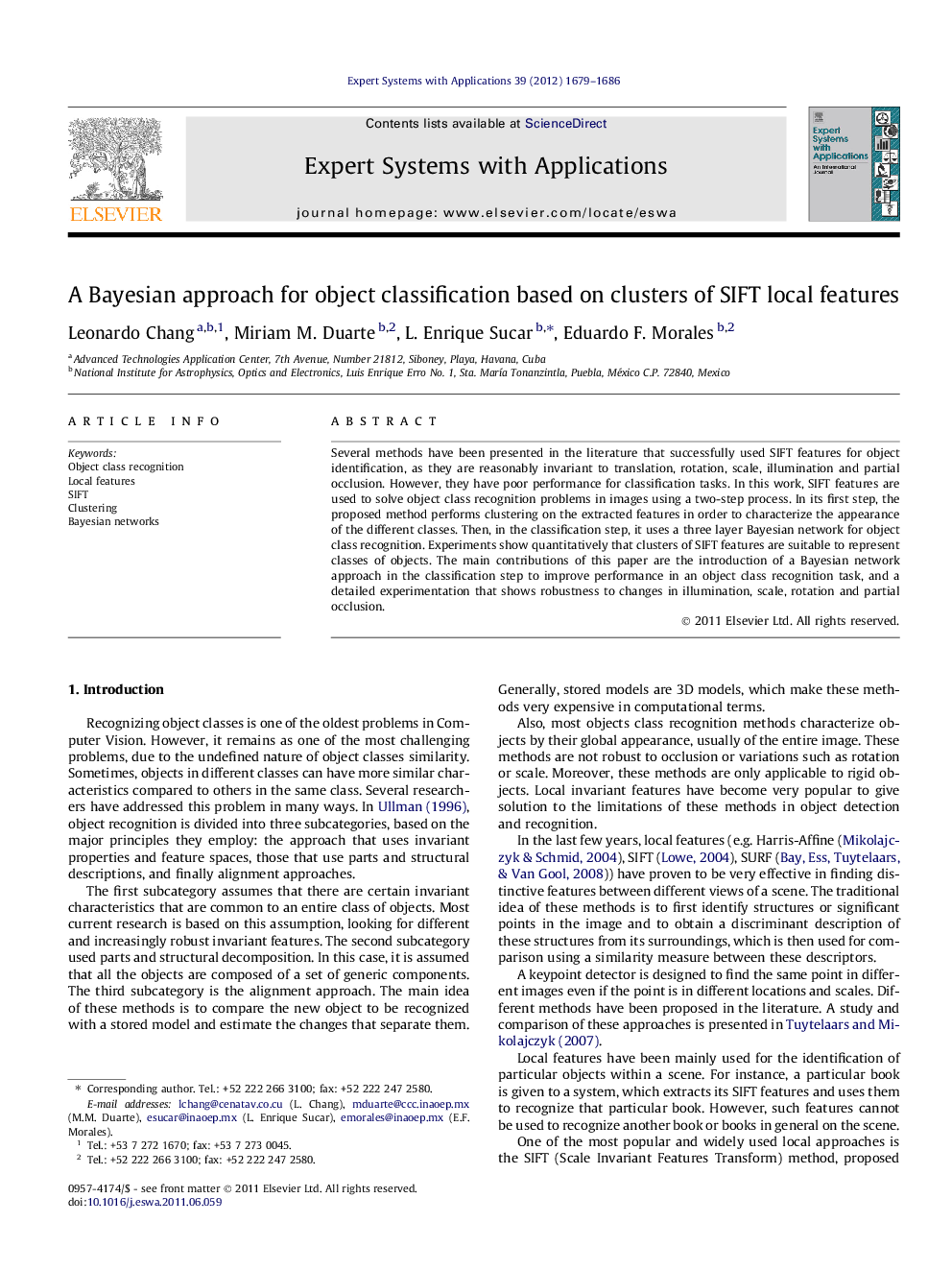| Article ID | Journal | Published Year | Pages | File Type |
|---|---|---|---|---|
| 388065 | Expert Systems with Applications | 2012 | 8 Pages |
Several methods have been presented in the literature that successfully used SIFT features for object identification, as they are reasonably invariant to translation, rotation, scale, illumination and partial occlusion. However, they have poor performance for classification tasks. In this work, SIFT features are used to solve object class recognition problems in images using a two-step process. In its first step, the proposed method performs clustering on the extracted features in order to characterize the appearance of the different classes. Then, in the classification step, it uses a three layer Bayesian network for object class recognition. Experiments show quantitatively that clusters of SIFT features are suitable to represent classes of objects. The main contributions of this paper are the introduction of a Bayesian network approach in the classification step to improve performance in an object class recognition task, and a detailed experimentation that shows robustness to changes in illumination, scale, rotation and partial occlusion.
► A Bayesian network approach in the classification step to improve performance is introduced. ► It is shown that clustering over local features provides robustness to several variations. ► This kind of approach outperforms a straightforward classification method using SIFT. ► Experimental evidence that support these last two issues is presented.
